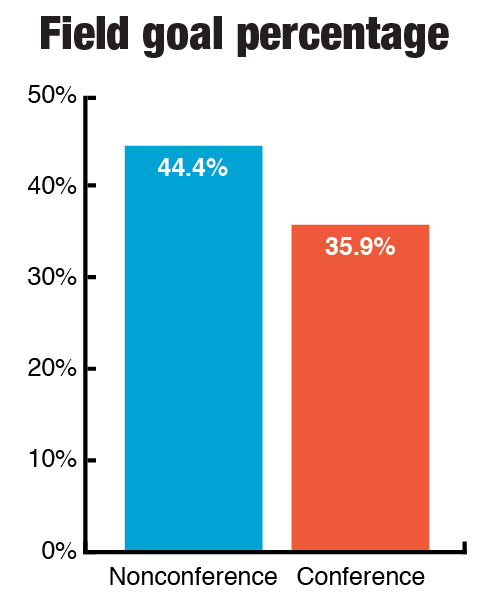Offensive slump behind Illini’s Big Ten losing streak
January 22, 2014
After starting 2-0 in conference play, the Illinois men’s basketball team has lost four straight games to fall to 2-4. Illinois’ recent slide and 2-4 start can be largely attributed to a conference-worst offense in Big Ten play. The Illini aren’t making shots the way they were in nonconference play.
Along with a dip in field goal percentage, Illinois has seen its 3-point percentage drop from 33.4 percent to 26.2 percent, which is 11th in the conference behind Northwestern. Still, the Illini shoot the long ball more often than every Big Ten team except the Wildcats and the Ohio State Buckeyes.
The drop in field goal percentage and 3-point percentage can be attributed to every player except point guard Tracy Abrams and freshman forward Malcolm Hill.
Illinois’ leading scorer, Rayvonte Rice, averaged 18.2 points per game in nonconference play but has averaged only 15.4 in league games. His field goal percentage against the league’s strong opponents has dropped 16.3 percentage points (50.0 percent to 33.7 percent), needing more shots per game to average three fewer points.
The largest offensive drop has come at the hands of center Nnanna Egwu. Egwu averaged 8.0 points per game on 41.7 percent shooting in nonconference play but has seen his scoring drop to 4.2 points per game in conference play while making just 24.4 percent of his shots.
Get The Daily Illini in your inbox!
Egwu has also missed all 11 3-pointers he’s shot in conference play, despite shooting 5-for-12 in nonconference play. He has gone scoreless in Illinois’ past two games.
Point guard Abrams has been able to increase his scoring largely thanks to a 10 percentage point increase in 3-point shooting (25.0 percent to 35.7 percent).
Abrams’ scoring has also increased because of his success from the free throw line, as he has hit 89.5 percent of his shots from the charity stripe in Big Ten play.
Abrams and his teammates are second in the conference in free throw percentage and free throws are providing more scoring than in nonconference play, but tightly called games have not benefited the Illini because of their susceptiblity to foul.
Abrams’ increased efficiency, along with the emergence of two additional scoring threats in freshmen Hill and Kendrick Nunn, has helped make up for the decreased offensive production from starters Rice, Egwu, Ekey and Bertrand.
Despite the decline in production from Egwu on the offensive end, Groce said his contribution on the defensive end compared to freshmen bigs Maverick Morgan and Austin Colbert justifies his presence on the court.
Defensive production hasn’t been the problem for Illinois in its six Big Ten games so far, although Illinois’ defense has seen a predictable decrease in conference play, allowing opponents to score more points on better shooting. The decreased offensive production against Big Ten opponents, however, is a surprise.
Johnathan can be reached at [email protected] and @jhett93.







